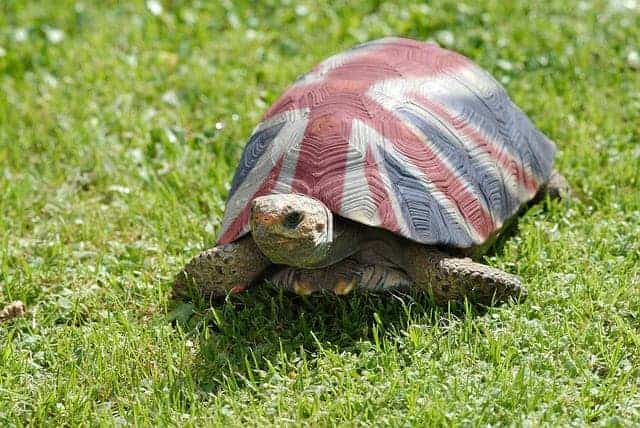
How to set up home for a new tortoise and keep it in the best of health and condition. Keeping lots of plants in your enclosure especially dandelions will help to keep your tortoise satisfied throughout the day.

Many tortoises that are bought to be kept as pets by inexperienced keepers suffer easily avoidable health problems and premature mortality.
How to keep a pet tortoise uk. How to keep your tortoise hydrated Your tortoise needs to stay hydrated especially when its a baby. Adult tortoises should have a fresh bowl of water regardless of whether they are inside or outside and baby tortoises should be soaked in water regularly. When you first bring home your baby tortoise you should bathe it a couple times a week.
They are not however particularly easy or low-maintenance animals to keep outside of their natural climatic range. Many tortoises that are bought to be kept as pets by inexperienced keepers suffer easily avoidable health problems and premature mortality. Two of the most frequent problem areas are inadequate housing and diet.
Tortoises are particularly long-lived animals which are presumed to live as long as 70-100 years. In order to keep your tortoise in a temperate climate the pen must be placed in a very sunny location. The floor should consist of soil as in the wild to enable burying and thermoregulation.
Most tortoises will need a custom-built enclosure. Make sure that the outdoor pen is very strong as tortoises especially large adults are surprisingly strong and a. Keeping a Pet Tortoise.
How to set up home for a new tortoise and keep it in the best of health and condition. Keeping a Pet Tortoise quantity. Permits Required to Keep a Tortoise as a Pet.
There are two possible permits that will be required to legally keep a tortoise in the UK. Which license you require depends on the length of the tortoises plastron which is the flat underbelly of a tortoise shell. If the plastron is smaller than 60mm the tortoise will not be able to be microchipped.
This means that you will need an Article 10 Application Certificate. All tortoise love to bask and this can be achieved with a heat lamp or letting them outside in the summer months. All tortoise kept indoors will need a least 5 UVAUVB lighting.
Enclosures should include suitable bedding such as hay and a shelter or hide at the cool end of the enclosure. Provide suitable enrichment such as logs mounds plants and anything else which will make the environment. Illicit pets in college are really just another one of those Cambridge traditions.
It is our duty to preserve and further such a righteous cause. This term I have been keeping a tortoise and I. We rely on the generosity of other fellow tortoise keepers to keep the site and our services up and running.
Please consider donating whatever amount you can to help sustain the Tortoise Protection Group or preferably a small regular monthly donation of 1 or 2 a month. Many tortoise owners have their own methods to maintaining outdoor conditions for their tortoises including having greenhouses for their tortoises to retreat to when in need of warmth but again youd need to be able to carefully monitor the temperature of such a space particularly if the tortoise is hibernating. If the space gets too warm then the tortoise will come out of hibernation early.
As with any pet feeding them the right food is important. Tortoises will happily forage for themselves however there are a few things we can do to make it easier. For example growing or picking dandelions are a great source of nourishment for a tortoise.
Other natural growing plants such as Chicory White Clover Sow Thistle and Heartsease add to a great diet for your tortoise. Tortoises are omnivores but predominantly eat plant-based foods. Your tortoise will get much of its food from its surroundings.
Keeping lots of plants in your enclosure especially dandelions will help to keep your tortoise satisfied throughout the day. Three or four times a week serve some extra leafy greens into the enclosure. If you wish to keep a Horsfield Russian tortoise you must dig at least 1 foot down and line this whole area with either chicken wire breeze blocks or similar bricks.
Alternatively dig the perimeter fence 1-2 feet below ground so that the tortoise can freely burrow in the enclosure but cannot dig its way out. If you need some more help choosing a pet tortoise here are some of the common breeds or species of tortoises kept as pets. Russian tortoise Testudo horsfieldii.
The Russian tortoise is among the smaller tortoises measuring only about 20 cm. Russian tortoises are often trapped and taken from their original habitats making them a vulnerable species according to the IUCN. First just dig a large hole.
You can place a plywood barrier inside the floor. Add a top to the hide box to shelter your tortoise. Cover the shelter with dirt and soil.
First and foremost you need to house your tortoise in an are of your garden that receives a consistent dose of sunlight or at the very least daylight throughout the day. This gives the ground a chance to warm up and allows the tortoise to bask in the warmth for a prolonged period of time. There are many species of tortoise available in the UK each with different needs so be sure to do your research and speak to an expert before purchaseThe most common species kept in the UK is the Hermannís Tortoise other species include Spur-thighed Marginated and Horsfieldís.
Tortoises will grow each year given t.